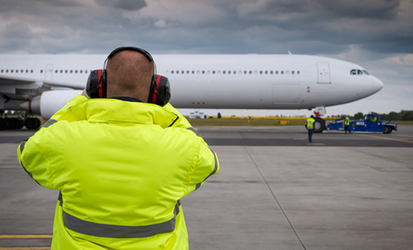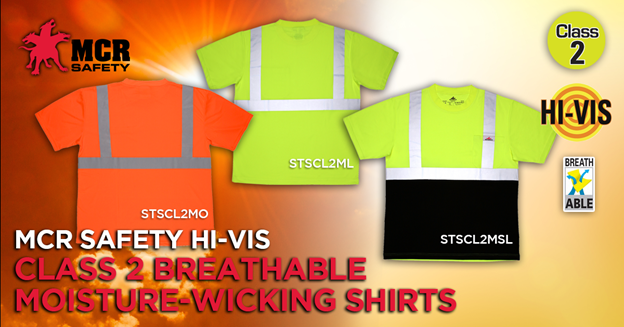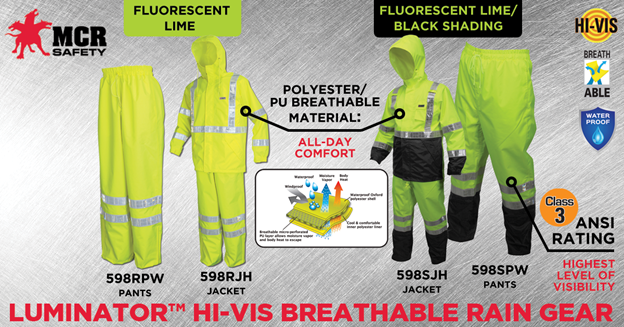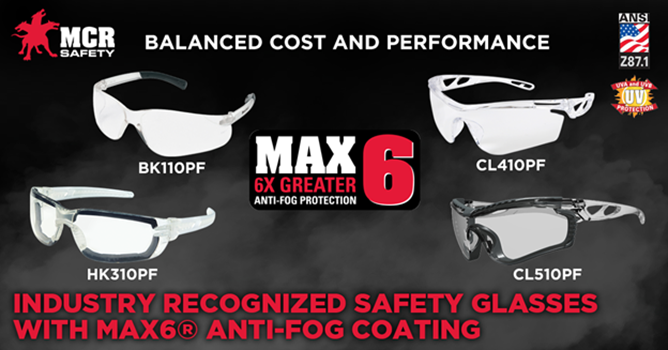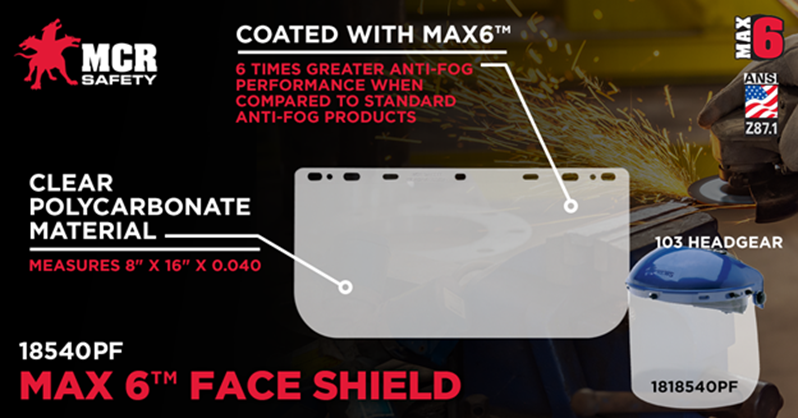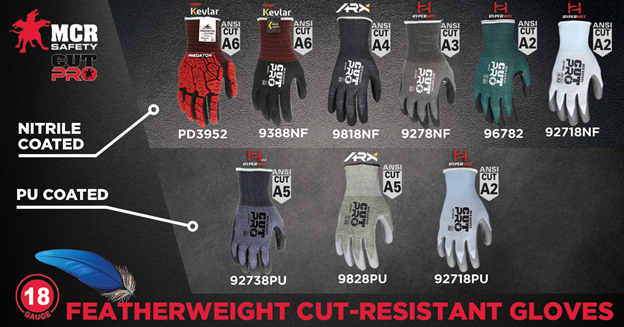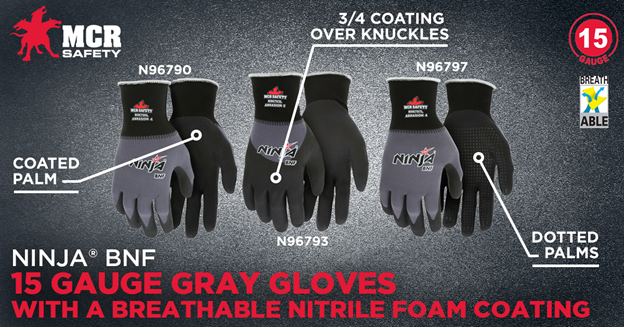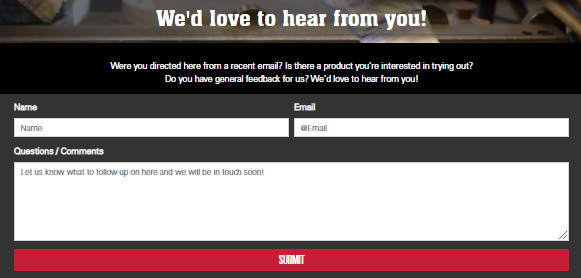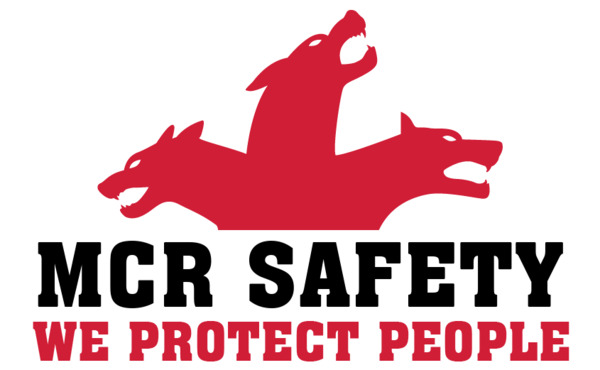Airline Industry Overview and Airport Safety Hazards
Posted by Anthony Webb on Jul 10th 2025
Airline revenue has been steadily rising for the past decade, but so has the ever-present danger that comes with working for airlines. As demand for airline travel increases, employees' safety risks and hazards increase, too, as airports become busier. Are you aware of the safety hazards in the airline industry that put employees at risk?
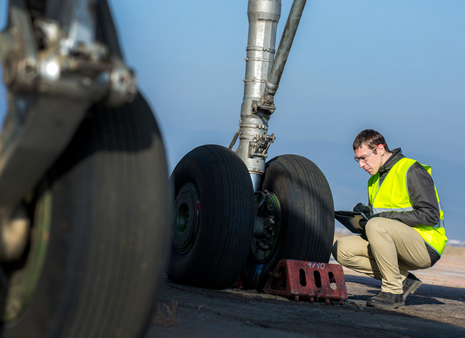
Next time you’re traveling, look at the people you see outside your plane window. The chances are good that those
working on the aircraft are probably wearing some form of MCR Safety gear.
Many airline workers are actually unaware of how dangerous their jobs really are. There are many workplace hazards present at airports, and whether you’re a ramp baggage handler, part of the ground service crew, or a mechanic, you need to be familiar with these hazards to stay safe. One easy way workers can stay safe from injury is by wearing the correct personal protective equipment (PPE).
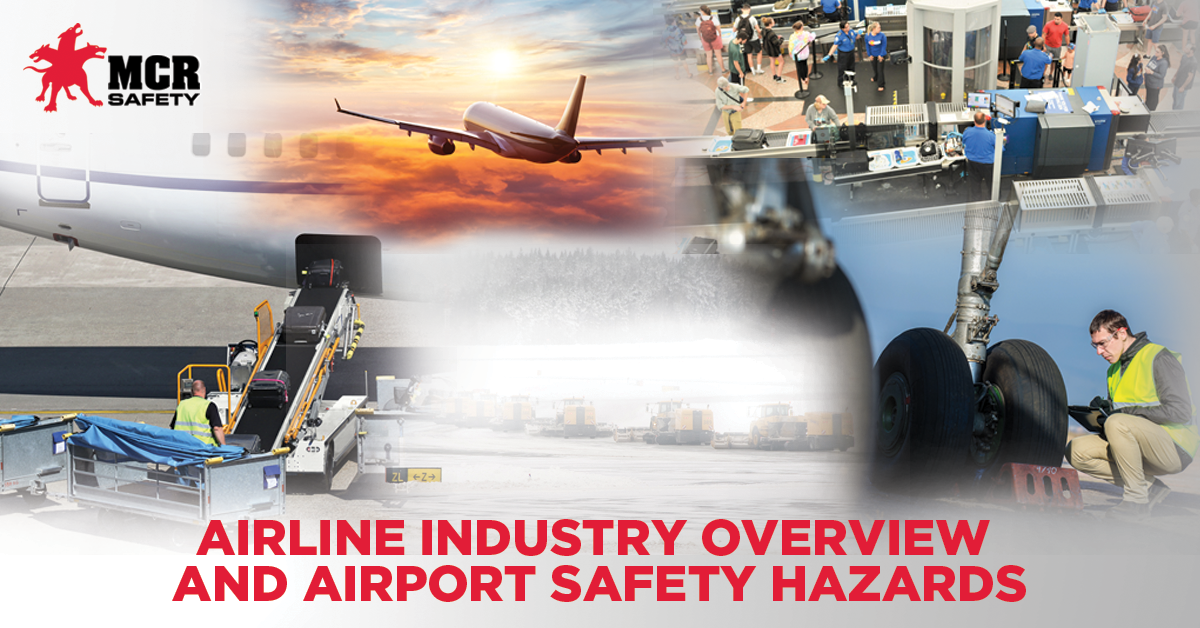
This article will provide an overview of the airline industry, recognize its top companies and leading airports, outline the airline-related jobs requiring protective gear, and highlight the typical hazards of airline work and the PPE to protect against those injuries. We’ll also cover OSHA regulations and common questions about airline employee safety. And, by the time you’re finished reading, you’ll have a crystal clear understanding of the PPE you should be wearing if you work in the airline industry.
Overview of the Airline Industry
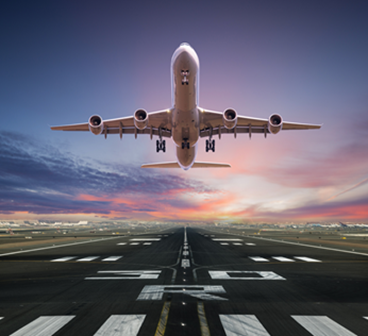
There are currently 59 airlines operating in the United States and regulated by federal authorities, including the U.S. Department of Transportation (DOT) and the Federal Aviation Administration (FAA).
All airlines operating in the United States fall under the Air Transportation 481 subsection of the North American Industry Classification System (NAICS). The industry is further broken up into two more sub-industries, with one focused on passenger transportation and the other focused on cargo transportation.
There may be only 59 airlines; however, over 5,000 different businesses fulfill the numerous functions this industry requires. Worldwide Flight Services is one such company that partners with airlines in providing technical services. Here are some of the support activities that make up this $106 billion industry:
- Aircraft maintenance
- Aircraft testing
- Baggage handling services
- Engineering solutions
- Repair services
Approximately 450,000 to 475,000 people work in the airline industry in the U.S.
Market Share and Top Companies

Some of the most successful passenger airlines in the U.S. by revenue include American Airlines, Delta, Frontier, Southwest, Spirit, Envoy, and United Airlines. By market share, American Airlines is the largest in the nation, with 19% of the total domestic share of the market. Southwest Airlines has 17%, Delta has 15%, and United has 12. Other popular airlines include smaller competitors like JetBlue, Alaskan Airlines, and Hawaiian Airlines.
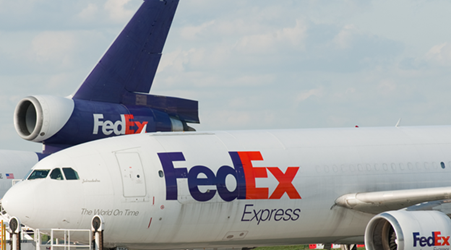
FedEx, a Local Memphis-based Company
From a cargo perspective, our neighbor down the street, FedEx Corporation, is the world’s largest cargo airline. Qatar Airways and United Parcel Service (UPS) come in second and third in cargo transit.
The Country’s Largest Airports
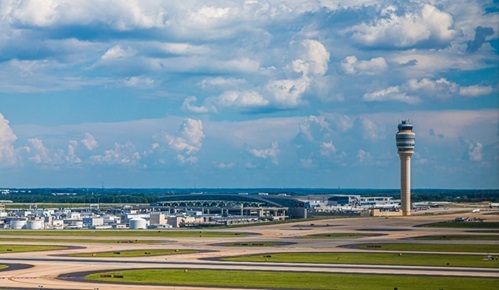
Roughly 20,000 airports operate across the U.S. Some are small private or regional airports, whereas others are more extensive public facilities. Here are ten of the busiest airports across the country:
- Denver International Airport (DIA) is the largest airport in North America and has nonstop flights to over 200 destinations worldwide. Thirty-five thousand employees are responsible for making it all happen.

DIA
- Dallas/Fort Worth International Airport (DFW) operates five total terminals with over 190 gates. It is the twelfth busiest airport globally, providing services to 260 total destinations. The below image shows just one of its five terminals, giving you an idea of the airport’s size.
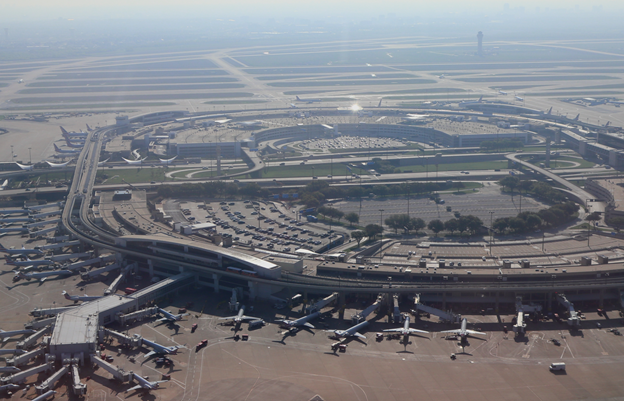
DFW
- Los Angeles International Airport (LAX) is the second busiest airport in the U.S., with over 84 million passengers traveling through it each year. Nine total terminals are responsible for getting people to their favorite domestic and international destinations.
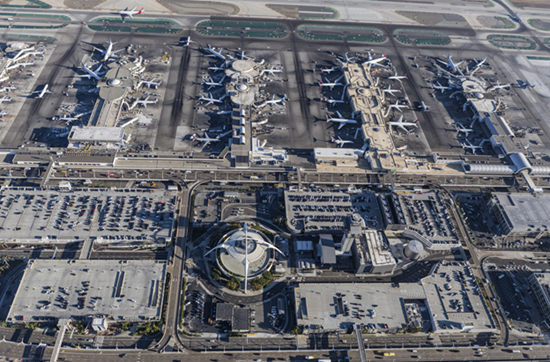
LAX
- The Fort Lauderdale-Hollywood International Airport (FLL) is one of the nation’s largest travel hubs and is located in Broward County, Florida. It serves the Miami metro area and handles about 700 flights per day to 135 places across the nation and around the globe.
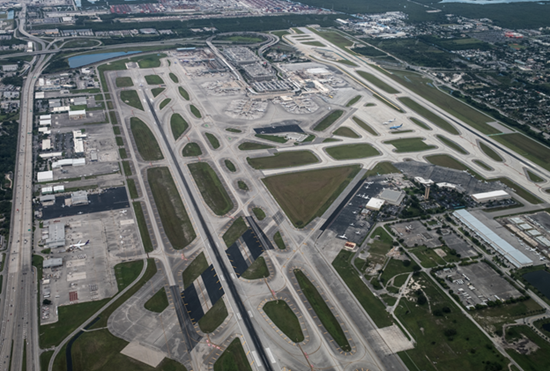
FLL
- John F. Kennedy International Airport (JFK) is located in Queens, New York, and is one of the nation’s oldest and largest airports. It’s the sixth busiest airport in the U.S. and one of the top 20 busiest airports in the world. It handles more than 60 million passengers every year.
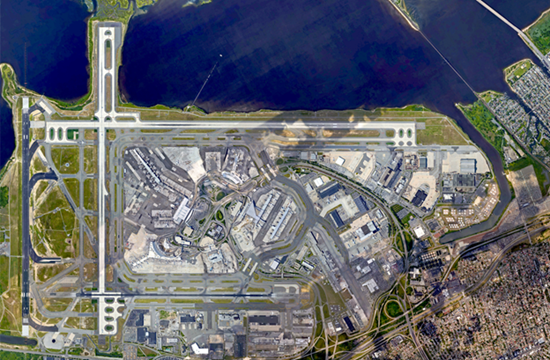
JFK
- Newark Liberty International Airport (EWR) is located in the heart of New Jersey and is a bustling airport that handles about 43 million passengers per year. It’s a central transportation hub for both people and packages, serving as a significant national and international distribution center for the USPS and FedEx.
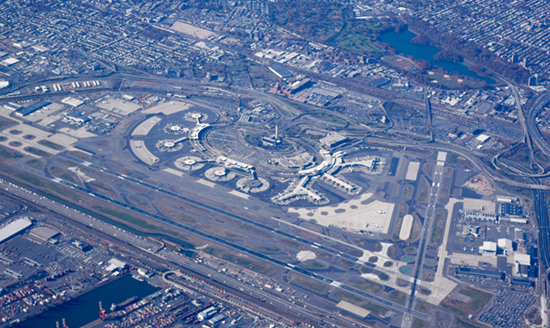
EWR
- The Hartsfield-Jackson Atlanta International Airport (ATL) is located near downtown Atlanta, Georgia, and is the central airport hub in the mid-southern U.S. It is the busiest airport in the U.S and handles 1,000 flights per day.
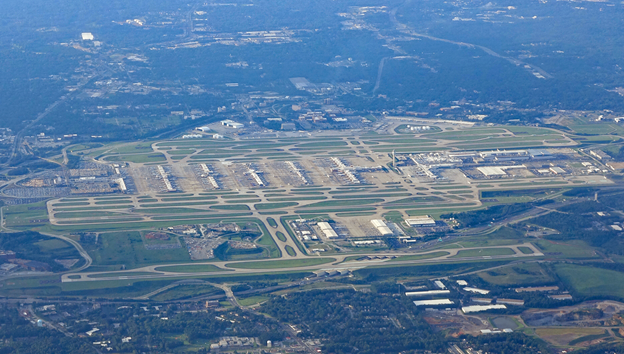
ATL
- O’Hare International Airport (ORD) is located on the northwest side of Chicago, Illinois. It’s a significant travel center for business travelers with nonstop flights to New York, Mexico City, Montreal, Paris, Hong Kong, and Dubai. Because it offers flights to cities worldwide, it’s often called the world’s busiest airport.

ORD
- The Orlando International Airport (MCO) is a former Florida military hub that became a commercial airport in the 1970s. Due to its location, it's considered a gateway airport to the southern U.S. and the southern hemisphere. It handles about 850 flights per day.
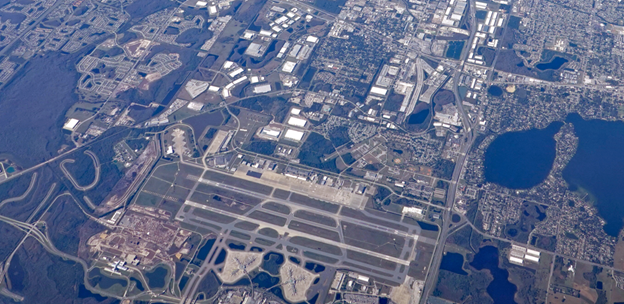
MCO
Airport Jobs Requiring PPE

Working for an airline brings safety risks and frequent contact with hazardous situations. Here’s a look at the types of airline jobs that typically require personal protective equipment (PPE).
- Aircraft mechanics and service technicians are in charge of examining airplane components, maintaining landing gear, and ensuring aircraft are ready to travel safely. These airline workers are commonly exposed to dangerous environments that require hearing protection, safety shoes, safety glasses, protective gloves, hard hats, and life jackets.
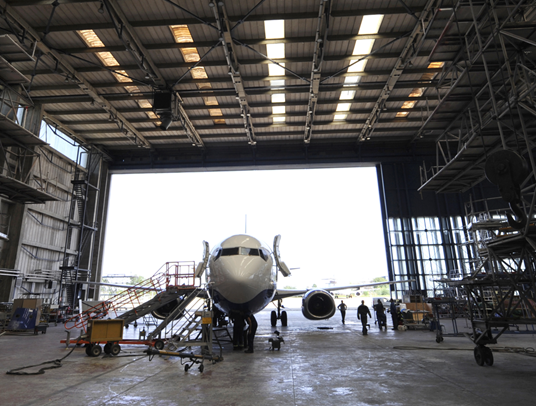
- Freight, stock, and material movers work on loading docks and help move bulky and heavy items through airports. They use PPE to protect themselves from exposure to extreme weather, chemicals, plants, animals, and machinery.

- General maintenance and repair workers inspect airport machinery to ensure it’s in proper working order. They come into frequent contact with motors, belts, moving parts, tools, oils, and corrosive substances.
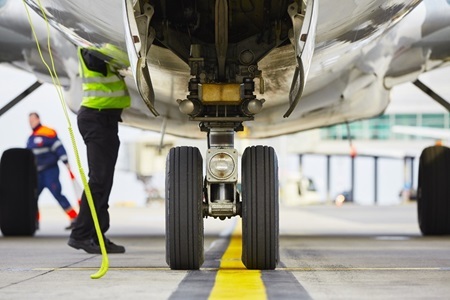
- Vehicle and equipment cleaners help preserve airport equipment and ensure a safe and hygienic operation. They work with dangerous machines and materials like scrubbing and scraping machines, cleaners, disinfectants, insecticides, abrasives, dyes, and polishes.

- Airline security guards protect people, preserve the safety of public spaces, and ensure airline personnel can work safely without interruptions. These security guards face many workplace hazards, including firearms and other weapons, hazardous materials, and exposure to biological contaminants from human/animal fluids and waste.
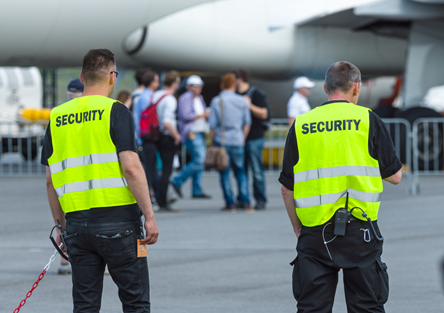
- Transportation security screeners, commonly called TSA workers, support airline security by screening passengers before boarding. These workers come into contact with many devices, materials, and people, so they commonly need safety glasses, gloves, shoes, and hearing protection.
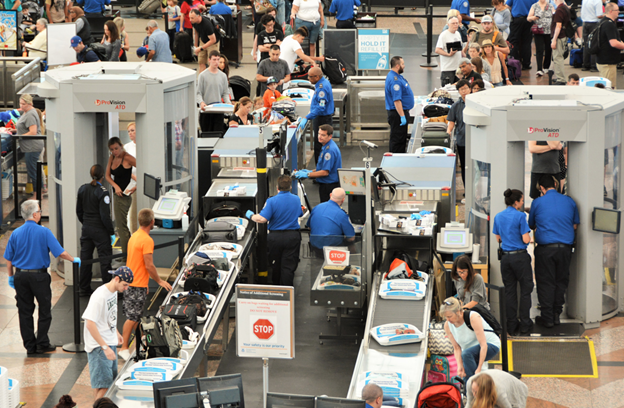
Airport Injuries and Safety Stats
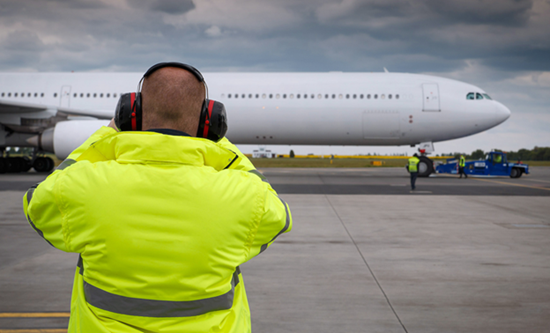
Safely performing the jobs highlighted above is imperative, as injuries can occur at any time. The Bureau of Labor Statistics (BLS) shows that the airline industry reports 35% more injuries than the average for other industries.

2020 Air Transportation Incident Rates
In 2020, there were 16,900 total air transportation injuries. Interestingly, a vast number of these injuries occur during passenger air transportation activities that take place at the gate stop area. See the image below for information about where these injuries are most likely to occur.

The Aviation Safety Reporting System (ASRS) has compiled over thirty years of personnel injury data for those working at the ramp gate. They have determined that 43% of all injuries occur at the gate stop area.
The best defense any airline employee can have against workplace injuries is to arm themselves with knowledge around the top hazards present.
Common Hazards

- Snow removal is an enormous challenge for many U.S. airports. Snow removal professionals must handle dangerous situations involving extreme temperatures, low visibility, rough or icy surfaces, chemicals, de-icing products, heavy lifting, and machinery with large and moving parts.

- Baggage handling operations expose workers to risks from heavy lifting, dangerous substances, and machines with belts and other moving parts that can easily cause crushing and entrapment injuries.
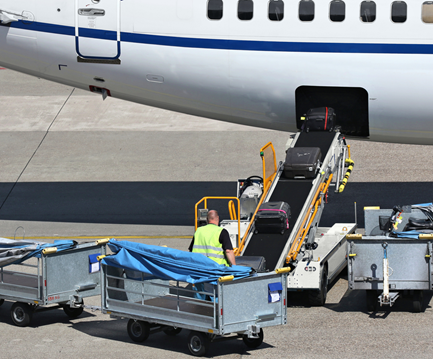
- Bloodborne pathogens from humans and animals are an ever-present danger at airports. These hazards come from blood, saliva, airborne particulate matter, and waste.
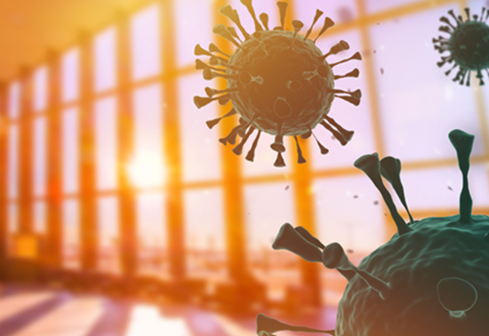
- The disinfecting and cleaning of airports to keep them safe also poses hazards for workers. Cleaning conditions include constant exposure to dangerous machines and materials. These can include everything from scrubber machines that can leave floors wet and slippery to corrosive liquids that can cause chemical burns.
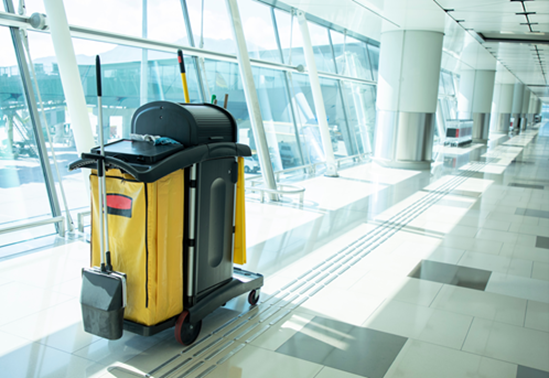
- Cuts and abrasions are common among airport workers, both those who work outside and inside the terminal. Airport screeners exceed other types of workers in terms of injury rates.

- Chemicals, dangerous substances, and hazmat spills also put airline workers at risk. For example, ground handlers sometimes come into contact with baggage that contains hazardous materials.
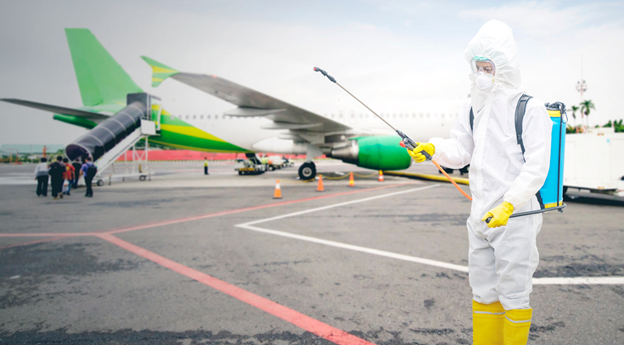
- Moving vehicles are also a constant threat in and around airports. A study by the FAA found that most worker-related motor vehicle accidents at airports involve “struck by” accidents where someone is hit or run over by a moving vehicle.
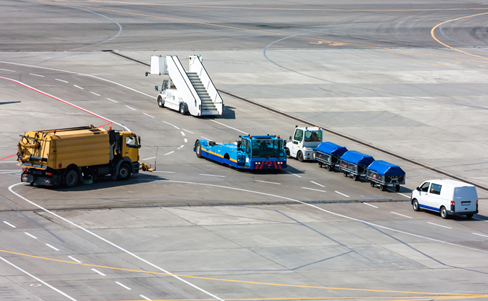
- Temperature extremes put workers at risk of heat exhaustion, frostbite, and other weather-related conditions. Some airport work environments are also inherently hot or cold, like the area near a jet engine that can reach scorching temperatures.
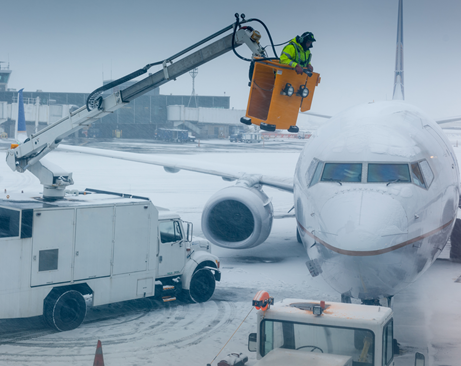
OSHA and Safety Concerns

The Occupational Safety and Health Administration (OSHA) is the federal agency that enforces safety standards for workers of all kinds, including airline and airport personnel. The agency recently issued updated guidelines for airplane cabin crews and other workers at airports, including stringent guidelines for using protective masks and other safety gear. Over the years, OSHA has been at the forefront of airline industry safety standards that protect workers from injuries and diseases. According to OSHA, the proper use of PPE is one of the essential factors in maintaining worker safety at U.S. airports.
Here are some educational resources offered to help airline companies maintain a safe working environment:
Personal Protective Equipment
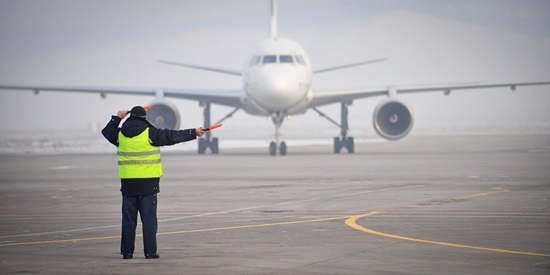
Personal protective equipment (PPE) for workers at airports is essential to their safety and well-being.
We identify many of the core PPE categories below, and we've gone ahead and linked each image to the central online catalog for these products.
Click the below images to learn more.
Safety Clothing
Worker visibility is critical with the number of vehicles operating at airports.
For those who prefer wearing hi-vis shirts, we stock hi-vis moisture-wicking styles.
When workers perform snow removal activities, staying warm and seen is critical!
If you’re wearing one of our hi-vis winter jackets shown above, you’re probably going to want to cover your face with warm gear, too. We also offer a variety of
accessories to help keep workers warm, protected, and seen. Our reflective suspenders and leg gaiters are excellent options for those who need to be seen around moving vehicles.
Planes don’t stop flying when it’s raining, which means the ramp crews don’t stop either. The above styles are waterproof and breathable!
Eye Protection
Our best-selling BearKat® safety glasses, BK110PF, offer the most advanced anti-fog coating on the market. They’re the perfect combination of high performance and low cost.
Airports employ many workers, which means cost savings discussions are unavoidable. Our Checklite® safety glasses should be at the top of your list for affordable PPE.
We only get one set of eyes in this lifetime, which means you have to protect them from worksite hazards. We stock multiple polarized frames and lens options to keep your eyes protected.
Face shields help keep moisture off a worker’s face when de-icing planes.
Hand Protection
TSA screeners and mechanics need cut-resistant gloves to avoid lacerations. The styles shown above all feature our lightest weight shell.
Disposable gloves are worn by numerous personnel at an airport. We offer a wide range of options, including medical-grade, industrial-grade, and chemical-resistant options.
Breathable work gloves are perfect for those needing general-purpose protection in the hangar or on the ramp. They protect hands from abrasive objects.
Common Questions
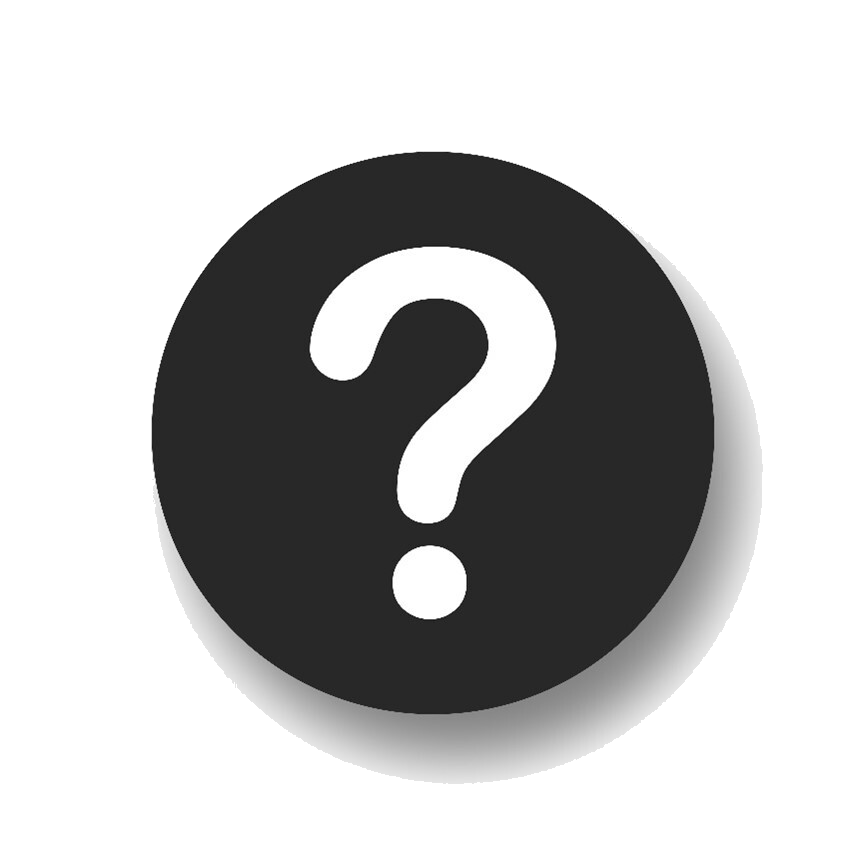
What is airport operations role?
- Airport Operations ensures an airport is safe and functional for everyone who uses it, including travelers and workers. From landing airplanes to coordinating baggage, Airport Operations oversees the details of numerous processes that keep air travel running smoothly.
Which airline is the safest?
- Although every airline claims to have high safety standards, certain airlines have better track records for safety than others. According to a CNN study of 385 airlines worldwide, Australian airline Qantas is the world’s safest air travel company.
Is Spirit Airlines safe?
- Spirit Airlines is a company that has come under fire numerous times for being investigated by the FAA over its safety standards. Although the company has been fined for maintenance and customer service issues, the FAA considers it a safe airline for passengers. Is American Airlines Safe? Is Frontier Airlines safety? Essentially, you could ask the same question about every airline, as safetyconcerns every individual. Check out airlineratings.com for airline safety ratings and historical information too.
How many airports in the US?
- The Federal Aviation Administration indicates there are 5,000 total public use airports, and an additional 14,400 private use airports.
Protecting Airline Employees for Over 45 Years
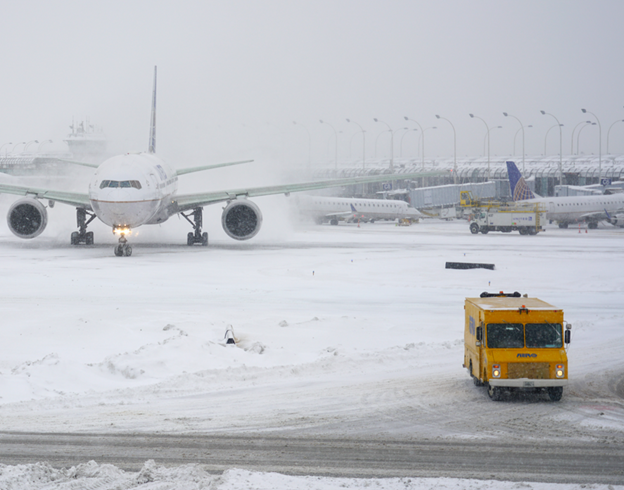
MCR Safety helps outfit the nation’s airline workers with safety gear that keeps air travel as safe as possible for everyone. As you can see from the airline industry information above, this is an enormous challenge that requires careful attention to detail and high-quality safety products. We hope you see we are committed to the task!
Click the below image to leave us comments, questions, or any concerns.
For over 45 years, MCR Safety has proven to be a world leader in gloves, glasses, and garments. Whether it's protecting baggage handlers, helping keep people visible, or cleaning the terminal, we are there providing solutions to workplace hazards. It's all part of our commitment to protect people.
No matter your industry, we have the personal protective equipment you need.
Learn more about MCR Safety by checking out our most recent video. For more information, browse our website, find a distributor, or give us a call at 800-955-6887.

